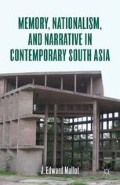Abstract
FOLLOWING YEARS OF CRITICAL NEGLECT, popular Hindi cinema—commonly referred to as “Bollywood”—has been acknowledged as an undeniable influence in South Asian society, as well as one of the most prolific sites of film production worldwide. For decades,Western reactions to Bollywood films seemed to waver somewhere between patronizing indulgence and outright hostility. Popular Indian films proved both too popular and, perhaps, too “Indian” for established critical tastes, as lavish song-and-dance sequences, all-too-obvious plotlines, and seemingly cheap melodrama suggested, in M. Madhava Prasad’s phrasing, a “not-yet-thereness” for the industry (5). If so, the country has been “not yet there” for decades, despite its astonishing output; even as a British colony, India boasted the third largest film market worldwide (Ganti 43), and in more recent decades its industry has been the most productive anywhere. Mass production is matched by mass consumption. Every day, some 23 million people—more than 2 percent of India’s population—go to the cinema (Rajadhyaksha 267), making film arguably its dominant cultural institution. The industry has, on occasion, provided touchstones for community conflict, seen in the violence that occurred at screenings of Deepa Mehta’s Fire (1996) and Kunal Kohli’s Fanaa (2006). In these cases, concerns about the nation’s body politic, cultural traditions, and marginalized populations were both voiced in film and debated due to film, making cinema the background and battleground for social debate.
Access this chapter
Tax calculation will be finalised at checkout
Purchases are for personal use only
Preview
Unable to display preview. Download preview PDF.
Copyright information
© 2012 J. Edward Mallot
About this chapter
Cite this chapter
Mallot, J.E. (2012). I Didn’t Kill Gandhi: Memory and the Bollywood Assassin. In: Memory, Nationalism, and Narrative in Contemporary South Asia. Palgrave Macmillan, New York. https://doi.org/10.1057/9781137007063_3
Download citation
DOI: https://doi.org/10.1057/9781137007063_3
Publisher Name: Palgrave Macmillan, New York
Print ISBN: 978-1-349-43523-4
Online ISBN: 978-1-137-00706-3
eBook Packages: Palgrave Literature CollectionLiterature, Cultural and Media Studies (R0)

